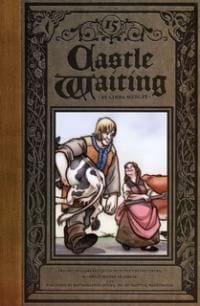
Forget Conan the Barbarian. Yes, Robert E. Howard’s classic stories essentially created the fantasy genre, and certainly the sword-and-sorcery variety, but that is part of the problem.
Theoretically, fantasy allows writers to create their own universes, governed by the laws of magic rather than of physics, and using folklore as its foundation rather than history. The genre should allow for a broad tent, one underneath which talking mythological creatures, regular humans, and alchemy spells can co-exist. As Neil Gaiman and J. K. Rowling have proven, fantasy can be relevant (and popular) in a modern context, not just as stories set in the past.
In practice, though, fantasy still deals in Howard’s terms and mechanics. His sloppily appropriated Middle Ages references and Arthurian allusions, overly baroque language, and implausible hyper-masculinity (and, of course, its sister—latent misogyny disguised as cheesecake) are all prevalent, even today. Howard, or slavish imitation thereof, is responsible for all the fantasy clichés—chain-mail bras for women; the prevalence of bloody swordplay; tangled dynastic lines, feudal alliances, and family trees; loincloths in the wintertime; and the overuse of words such as “brethren”, “hither”, and “yore” to give off the whiff of historical accuracy. Just as if no one in medieval times used slang, spoke without the use of iambic pentameter, or dressed warmly.
To be fair, the comics adaptations of Howard’s pulp stories featured great cartoonists and fanatically detailed art. But Conan’s got a lot to answer for.
Linda Medley’s Castle Waiting does not mock, exactly, but it does kid. Her series takes place in the same vaguely medieval context as most fantasies, but Castle Waiting offers a feminist, domestic corrective to Conan and all the rest. It emphasizes doing the dishes over doing every scullery maid, and slashing the household expenses instead of ogres.
Castle Waiting‘s concept is simple. The castoffs, also-rans, and other supporting characters—including many created by Medley—of fairy tales and folktales end up at a castle, and live with each other. Various creatures, humans, and minor spirits come there, fleeing their former (and often violent) lives, looking for a chance at reinvention. But whereas Conan, Usagi Yojimbo and their ilk are always questing, in route to somewhere else, Castle Waiting’s misfits stay put. In doing so, the castle gradually builds up a community.
Medley’s comics series involves the creation of a makeshift family, a close-knit group that’s overseen by Rackham, a humanoid stork who’s a bit of a dandy. These generous oddballs must deal with each other’s eccentricities, and pull their weight around the house. Though Medley draws and writes each character appealingly, it’s the larger picture—the family unit—that engages her most. Relationships and community drive Castle Waiting, and everything from potions and spells to individual backstories and mythologies serve Medley’s communal vision.
That, in itself, sets it apart from a good deal of fantasy comics. Medley’s drawing style pulls Castle Waiting further away from the fantasy norm. She pencils and inks with a thick, rough-hewn line that evokes medieval woodcuts, as does the ochre brown ink used in printing the comic. Medley draws just enough detail to make gestures convincing and the architecture solid. She is not, however, trying to achieve Barry Windsor-Smith’s hyper-realistic level of physical detail, or Richard Corben’s use of paints and shadow to create near-photographic renditions of musculature.
Rather, Medley’s line emphasizes openness and broad strokes, which allow for humor to seem more natural than they might otherwise. And Castle Waiting is, for the most part, a comedy. Throughout, Medley deflates fantasy’s pretensions. Instead of the softporn physical proportions of Red Sonja or the waifs of Disney movies, Medley’s women—the comic’s protagonists—are bearded ladies, plain women with wry smiles and realistic bosoms, and middle-aged housekeepers past their primes—and who all comment hilariously on body image issues.
Castle Waiting‘s humor reveals its self-awareness. Medley is fond of jokes that draw on—and presuppose—the reader’s understanding of the fantasy genre and its roots. All the same, it’s not mere parody. Medley treats her characters, and their development and blossoming relationships, seriously. Furthermore, the castle itself is a creation of quiet, expansive beauty. Each new issue—volume 2 is now on #15—reveals new hallways, secret passages, and hidden floors.
Medley suggests that people work that way, too. Her characters are bigger and more complex than fantasy stereotypes they come packaged in, and her comic explodes and tweaks the conventions of her chosen genre. Castle Waiting is a fantasy comic large-hearted enough to match the genre’s potential, not just its conventions.

![Call for Papers: All Things Reconsidered [MUSIC] May-August 2024](https://www.popmatters.com/wp-content/uploads/2024/04/all-things-reconsidered-call-music-may-2024-720x380.jpg)



